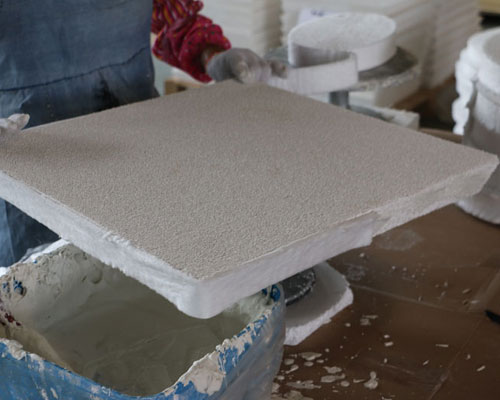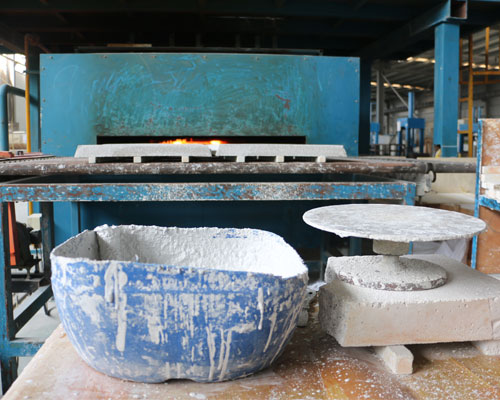The foam ceramic filter plate is made of polyurethane foam as a carrier and immersed in a ceramic slurry made of ceramic powder, bonding agent, sintering aid, suspension agent, etc. Then squeeze out the excess slurry, so that the ceramic slurry is evenly coated on the carrier frame to form a green body. Then the green body is dried and sintered at high temperature. This process is also known as the organic foam impregnation method, and it is currently a common domestic foam ceramic production process.
The spraying process is one of the production processes for foam ceramic filter plates. It sprays the ceramic slurry to the filter plate through spray nozzles under pressure. Its purpose is to improve the surface properties of the green body, including improving the smoothness of the surface and thickening the mesh line. At the same time, it also has an impact on the internal quality of the product.

Foam Ceramic Production Process
Shotcrete after sizing: The shotcrete after sizing is wet shotcrete, which saves the subsequent drying process, and the adsorption effect of the blank to the slurry is average. But for products with large size and thin thickness, spraying after sizing is also suitable to prevent damage to the green body by spraying after drying. But its disadvantage is that it can only be sprayed on one side, which is generally the front side required for spraying and filtering the molten metal. Taking into account the spraying effect, the spraying method after sizing is not very common.
Shotcrete after drying: After drying, the shotcrete belongs to the dry shotcrete, which is suitable for double-sided shotcreting, and the slurry can be adjusted to the maximum consistency of the spray to maximize the surface of the body. This is the more commonly used spraying method for foam ceramic production. The disadvantages of spraying after drying are heavy labor, damage to the green body, and easy to produce slag.
As an important branch of the three major categories of foam ceramics (alumina, silicon carbide, and zirconia), alumina foam ceramics is also the earliest type of foam ceramics used. It is widely used in the aluminum and alloy casting industries. At present, with the continuous improvement of the performance requirements of aluminum and aluminum alloy products, new requirements are continuously put forward for the filtration of aluminum liquid, which requires its casting characteristics such as high purity, less floating impurities, and gentle flow rate of the aluminum liquid to achieve the casting characteristics. Aluminum products have better physical and chemical properties and machining performance, so as to meet more demanding conditions of use and achieve the purpose of extending the service life of aluminum products.

